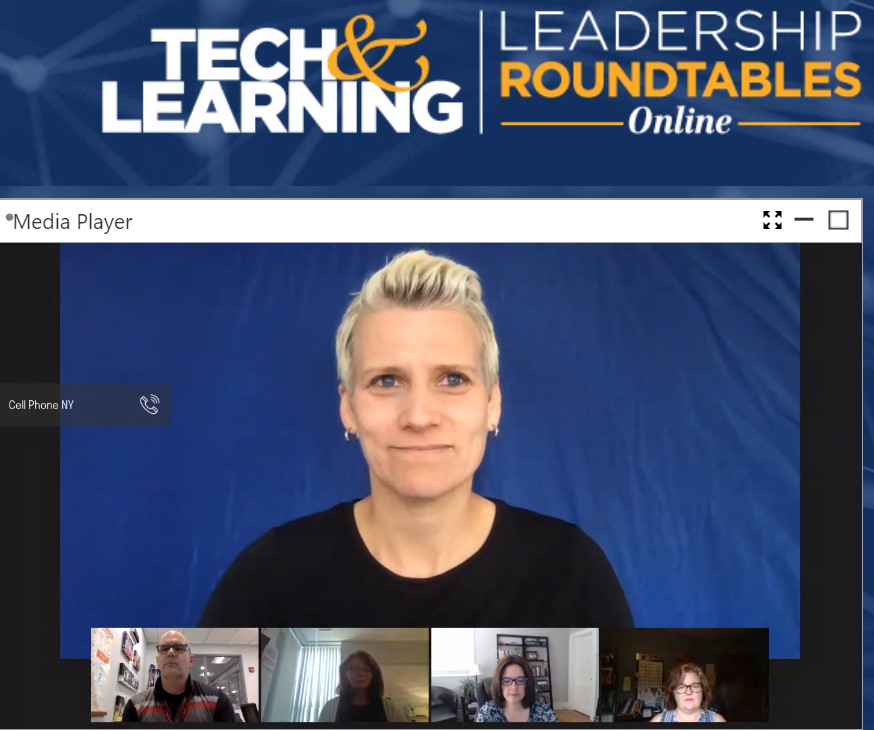Planning for Next Year: Transitioning from Remote Learning to Blended Learning
Blended and remote learning will be part of learning going forward according to leaders from Parkland School District and Township High School District #211.

COVID-19 has had an unprecedented impact on education worldwide, which has brought to light the profound need for remote learning.
But how can you prepare for next school year when there are so many unknowns? In this Tech & Learning Remote Learning webinar, Dr. Kecia Ray talked with school district leaders about how they are designing an infrastructure that supports blended learning, including providing the training and content to ensure continuity of education for their school communities next year. The conversation ranged from handling uncertainty and addressing digital equity to creating opportunities and shifting pedagogy.
Watch the on-demand version here
Key Takeaways
Staying focused. Sam Edwards, Technology Integration Specialist for Parkland School District, talked about how they have been trying to provide all the tech support so teachers can focus on pedagogy. Having one platform for the entire district allows that to happen. Professional development has been strongly encouraged, with time set aside each day for virtual training sessions. And with no assessments to worry about, teachers have been encouraged to try new approaches to instruction.
Staying connected. “We may be socially distant, but we don’t need to be socially disconnected,” said Kellie C. Ady, Senior Director of Instructional Strategy, PowerSchool. Being able to connect with other educators in the school community is important to supporting one another. At first, educators were reactive but now is the time to be proactive, most likely in a blended environment.
Handling uncertainty. “Education is not in crisis. People are still learning, just not the traditional way,” said Robert Schuetz, Technology Coordinator, Palatine High School, Township High School District 211. The human side of education is being brought to the forefront, and is critical right now with so much uncertainty. The district is trying to be flexible, nimble and prepared for what’s going to happen. The uncertainty has forced everyone to ask critical questions and put on our learner hats. “We have problems to solve,” Scheutz said. “And no one has all the answers right now.” The pandemic has allowed educators to put aside less important things, such as assessment, to focus on the actual learning.
Addressing digital equity. Scheutz also discussed how the pandemic has brought attention to the serious access and device issues that exist for many schools and students. “Internet access often varies greatly from home to home,” said Schuetz. “Now is the time for leadership to get together to make sure everyone has access.” Finding ways to provide WiFi for an entire district may be part of the solution.
Tools and ideas to transform education. Sign up below.
“Digital equity is one of the critical issues of our time,” said Tracy Smith, Assistant to the Superintendent for Operations, Parkland School District. The district has been focusing on purchasing and distributing devices to ensure all students have access to the many online learning resources available. “Our goal No. 1 was to make sure everyone was connected,” Smith said.
Re-imagining learning. “In education, time has been a constant and learning is the variable,” said Smith. “But with remote learning, it’s an opportunity to make time the variable and learning the constant.” Some learners are race car drivers and others are on ponies, but they all get there, she said. Remote learning allows students to become independent learners and supports cognitive learning.
Special ed needs. How to better support students with special needs, specifically after the return to buildings, is a developing story, said Ady. Being able to stay connected via video and audio has been critical and essential for special populations, said Schuetz.
Staying connected. Having the combination of asynchronous and synchronous communication tools, plus a live help desk, to assist with technical needs has been great for Palatine High School, said Schuetz. At Parkland Schools, the administration building has been transformed into a tech repair center, according to Edwards. Leveraging discussion board answers to build FAQs that are accessible for parents is a good strategy, said Ady, as many of the same questions pop up over and over.
Evolving pedagogy. “We need to go from engagement to investment,” said Edwards, adding that students have to take a role in becoming involved in how their learning is delivered. “We need to bring in students to ask them what’s not working in terms of pedagogy,” agreed Schuetz. “They need to be part of the conversation.”
Lunch 'n Learn with Tech & Learning
This report is part of Tech & Learning's District Leadership Lunch ‘n Learn Roundtable series, hosted by Dr. Kecia Ray. In this series, districts from across the U.S. share their strategic plans, the challenges they are facing, and the creative solutions they are using to support students and teachers. Access previous webinars and register for our upcoming events here.
Lunch 'n Learn Roundtable Recaps
Ray Bendici is the Managing Editor of Tech & Learning and Tech & Learning University. He is an award-winning journalist/editor, with more than 20 years of experience, including a specific focus on education.
